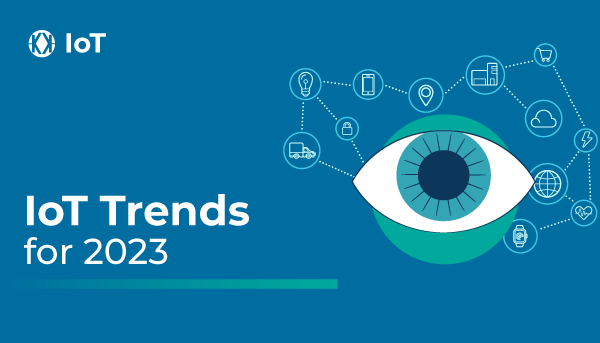After participating in countless projects and national and international fairs, and having traveled throughout Brazil with the IoT RoadShow, the team of specialists at Khomp compiled a list of trends that promise to become a part of the everyday reality of the segment of automation and intelligent sensors in 2023. The truth is that the market is maturing and the conversations keep going deeper: what was once a possibility is now being tested in the field or used as a completely functioning system.
While technical resources are improving with updates in connectivity, hardware and platforms, the executive class has also become interested in the subject. The volume of research into private networks and the exchange of information related to them, to intelligent sensing, and to automatic capture of data has grown precipitously. What point are you at?
In the report that follows, you will understand in detail what you can expect for 2023. And why expectations are so high for a turning point in regard to the adoption of IoT in Brazil.
CAT-M Connectivity and NB-IoT
It is expected that the principal topics that will dominate the conversation in regard to connectivity will be CAT-M and NB-IoT, two protocols that provide high coverage and very low energy consumption with dedicated sensors for the Internet of Things.
In summary, equipment that uses CAT-M needs to send data at shorter time intervals over a 4G LTE network. This is why they are recommended for more complex applications, such as tracking of machinery, automobiles, or the climate.
In contrast, devices that operate on NB-IoT (Narrowband) networks send data at longer intervals, delivering information only once or twice a day. The sensor connects to an LPWA (Low Power Wide Area) network, sends its data, and disconnects. This way, it does not use much energy, making it an excellent option for projects that monitor leakage of liquids, water consumption and temperature.
Hardware as a Service
With regard to large volume acquisitions, manufacturers are broadening their business models and offering rental of hardware or hardware as a service. With this modality, the client enters into a leasing contract, guaranteeing the use of needed technologies without compromising their cash flow.
IoT Platforms
With the spread of the IoT concept, there has been a corresponding increase in companies specialized in IoT platforms. They provide easy-to-access frameworks for environments by configuring equipment, monitoring data collected in real time, and generating automations.
This growth is illustrated by the famous KickStarter IoT project created by Khomp in conjunction with TagoIO. The user acquires a kit of sensors and does all their own configuration in the Tago platform. In less than two hours, they can have a monitoring system that is up and running!
Adoption of Wearables in industry
Industry is easily one of the segments that has invested most in IoT technology to automate processes and increase productivity. From the point of view of what is trending, the adoption of wearables (wearable devices) stands out. When it is applied well, this kind of equipment can really make a difference.
A good example is intelligent ID badges, which make it possible to track collaborators in real time throughout the factory floor. Having this data available allows management to avoid workplace accidents, generate reports on rest periods and even locate key professionals in emergency situations. CENIBRA, in the cellulose industry, has used wearables, and the results have been impressive.
The water, energy, and gas meter boom (utilities)
Various organizations are assuming real commitments to sustainability. And the year 2023 will see the arrival of more technologies that are being developed to meet this objective. As a part of this movement, equipment that monitors consumption of energy, water and gas are the center of attention at global innovation fairs.
In addition to measuring consumption, these types of devices makes it possible to perform rationing between areas, evaluate the performance of machines, and identify waste. All of this with simplified monitoring and the creation of dashboards with information in real time.
Would you like to know more?
To better understand IoT devices designed for intelligent automation download our portfolio and/or talk to our team of commercial experts.
One more tip: Subscribe to the Khomp newsletter to receive other articles on technologies that can help you with your own Energy Management project.
